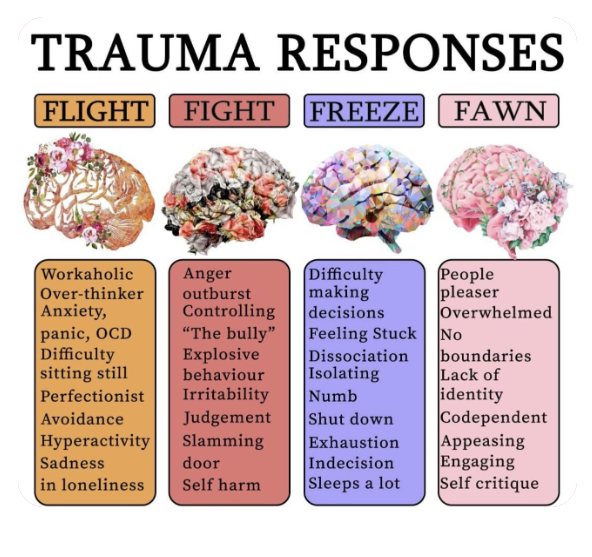
Trauma is an event that overwhelms your ability to cope with it. It can be caused by anything from a car accident to the loss of a loved one. In this article, we’ll look at four basic types of trauma responses: flight, fight, freeze and fawn. Understanding these responses will help you understand how to support people who’ve experienced trauma—and how to protect yourself if you’re ever in danger.
Type 1: Flight
The most common response to trauma is flight, a survival instinct that allows people to escape from danger. The physical response involves an increase in heart rate and blood pressure, as well as dilated pupils. The emotional response includes fear, anxiety, or anger; these emotions can be triggered at any time by reminders of the traumatic event (such as seeing someone who resembles the perpetrator). Mental processes like memory formation are impaired during this type of reaction because they require attentional resources that are unavailable when you’re running for your life!
Type 2: Fight
The fight response is when your body goes into fight or flight mode. Your heart rate increases, blood pressure rises and adrenaline floods your system. This can be useful in dangerous situations, but if it’s used too much it can cause physical damage to the body and cause problems with relationships.
Type 3: Freeze
Freeze is the most common response to trauma. It can happen at any age and is a survival response to overwhelming fear. When you freeze, your body goes into “fight or flight” mode: Your heart rate increases, your breathing becomes rapid and shallow, cortisol levels rise (which makes it easier for you to run away), blood flow is directed away from non-vital organs like the stomach–and toward muscles that need extra oxygen–and digestion slows down so you don’t have time for food in an emergency situation. It’s important not to mistake freezing as a sign of weakness; it’s actually a good thing! If we didn’t have this ability to freeze when faced with danger or stressors we wouldn’t be here today because there would be no way we could defend ourselves against predators or other threats on the African savannah millions of years ago when our ancestors were first evolving into humans.”
Type 4: Fawn
If you are a Type 4, you will try to make yourself look small, weak, and helpless. You might do this by crawling on the ground with your hands up in surrender or curling into a ball on the ground. You might also try to use your body language and facial expressions to show that you are not a threat (for example: crying). You will also try to make the attacker feel powerful and in control by giving them what they want or saying yes when they ask questions like “Where’s my money?” or “Are there any other people here?” You may even lie if it means getting away from them faster!
We hope that this blog post has given you a better understanding of the four basic trauma responses. We also understand that, as with all things in life, there are exceptions to these rules. We encourage you to use your own judgment when dealing with people who may have experienced trauma or PTSD. The most important thing is to remember that everyone has their own unique story and needs something different from others around them–even if they appear similar on the surface!
